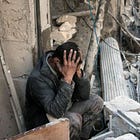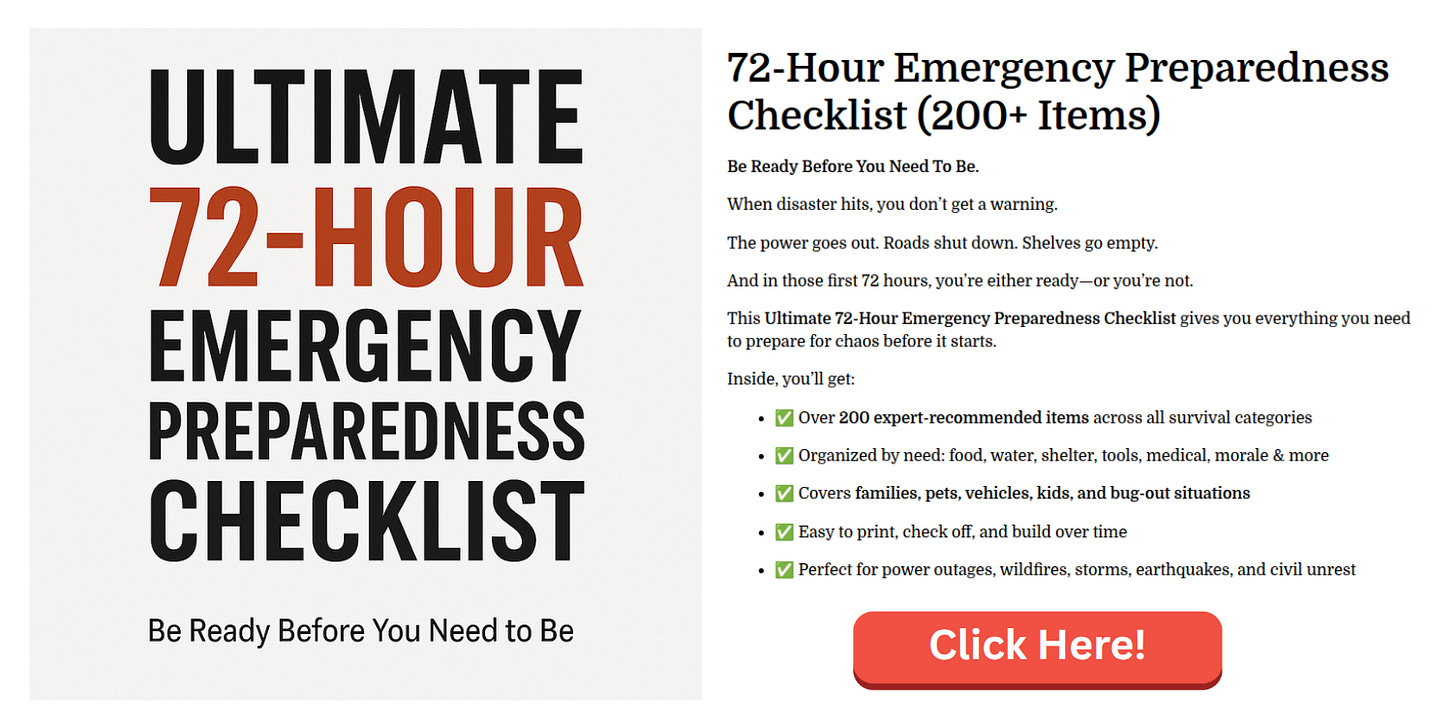The First 72 Hours: Navigating the Chaos of a Natural Disaster
When a natural disaster strikes, the first 72 hours are a whirlwind of shock, survival, and adaptation.
Whether it’s a hurricane, earthquake, wildfire, or flood, these initial moments set the tone for recovery.
As someone who’s seen communities band together and individuals rise to the occasion, I want to share what those critical first three days look like, based on real patterns and human experiences, to help you prepare or reflect.
Hour 0–12 - The Immediate Aftermath
The moment a disaster hits, the world feels like it’s been turned upside down.
Sirens wail, phones buzz with alerts, or maybe there’s just an eerie silence after the shaking stops.
Your brain kicks into survival mode. Adrenaline surges, and instincts take over.
Assess Safety
The first priority is ensuring you and your loved ones are safe.
Are you in immediate danger?
Is your home structurally sound?
For example, after an earthquake, you’re checking for gas leaks or downed power lines. In a flood, you’re moving to higher ground.
Data from FEMA shows that 60% of injuries in disasters occur in the first few hours due to unsafe actions like re-entering damaged buildings.
Basic Needs
You’re gauging what you have, water, food, shelter.
If you’ve prepped, you’re reaching for that emergency kit with flashlights, batteries, and non-perishable snacks.
If not, you’re likely scrambling. Studies from the Red Cross indicate that most households have less than 48 hours of supplies on hand, making these moments critical.
Information Overload or Blackout
You’re either glued to a radio, phone, or neighbor for updates, or you’re cut off entirely.
Power outages are common, 80% of U.S. households lose electricity within the first 12 hours of a major disaster, per the Department of Energy.
Misinformation spreads fast, so sticking to verified sources like NOAA Weather Radio or local emergency services is key.
What to Do: Stay calm, check for injuries, and avoid unnecessary risks.
If you’re safe, start conserving resources, turn off utilities if there’s damage, and ration water (1 gallon per person per day is the FEMA guideline).
Connect with neighbors if possible; community strength emerges early.
Hour 12–36 - Finding Stability
By now, the initial shock is wearing off, but uncertainty lingers.
You’re starting to grasp the scale of the disaster.
Roads might be blocked, stores closed, and emergency services stretched thin. This is when resourcefulness kicks in.
Shelter and Safety
If your home is unsafe, you’re seeking temporary shelter, maybe a community center, a car, or a friend’s house.
During Hurricane Katrina, for instance, 20% of displaced residents relied on informal networks like family or friends for shelter in the first 48 hours.
Communication Struggles
Cell networks are often overloaded or down.
In the 2017 California wildfires, 70% of cell towers in affected areas were nonfunctional within 24 hours.
Ham radios, walkie-talkies, or even handwritten notes become lifelines.
Mental Toll
Anxiety creeps in. Are loved ones okay? What’s the damage?
The American Psychological Association notes that acute stress reactions peak around 24–36 hours post-disaster.
Kids, especially, need reassurance,simple routines like a shared meal can ground them.
What to Do: Prioritize warmth, hydration, and rest. If you’re displaced, register with local authorities or shelters for aid.
Document damage with photos for insurance claims later. Check on vulnerable neighbors,elderly or disabled folks often get overlooked.
If you’re isolated, signal for help (whistles, bright cloth, or mirrors work).
Hour 36–72 - The Shift to Recovery
By day three, the chaos starts to organize.
Emergency responders are more visible, and relief efforts like food distribution or medical tents, begin to take shape.
But resources are still scarce, and frustration can mount.
Community Response
This is when human resilience shines.
Neighbors share supplies, clear debris, or form watch groups to deter looting (which, contrary to media hype, is rare, less than 5% of disaster-affected areas report significant looting, per criminology studies).
In the 2011 Joplin tornado, volunteers were organizing food drives within 48 hours.
Aid and Access
FEMA or local agencies may set up relief centers, but getting there can be tough if roads are blocked or gas is short.
Only about 30% of disaster victims access federal aid in the first 72 hours, per government reports, due to logistical delays.
Emotional Rollercoaster
Hope mixes with exhaustion. You’re grateful to be alive but overwhelmed by the road ahead.
Social media posts from recent disasters, like Hurricane Helene in 2024, show survivors sharing stories of loss alongside small victories, like finding a missing pet or getting a generator running.
What to Do
Stay informed through official channels.
If you’re able, volunteer to help others, it boosts morale and builds networks.
Keep a journal of expenses and interactions for insurance or aid applications.
And don’t ignore your mental health; even brief moments of gratitude or connection can recharge you.
Preparing for the Next 72 Hours
The biggest lesson from the first 72 hours?
Preparation is everything.
A basic emergency kit, water, food, first-aid supplies, flashlight, and a battery-powered radio,can make or break your experience.
Know your area’s risks (flood zones, fault lines) and have a family plan: where to meet, who to call.
Apps like FEMA’s or Red Cross’s can provide real-time alerts and tips.
The first 72 hours of a disaster test your instincts, resources, and community.
They’re chaotic, yes, but they also reveal our capacity to adapt and endure.
If you’ve been through a disaster, what got you through those first days?
If you’re preparing, what’s your next step?
Let’s talk in the comments, I’d love to hear your stories or tips.







Okay, the flooding is what a lot of people seem to be talking about. Why is water dangerous? It is what the water carries and does. Dead trees, trash, tents, cars, RVs, dead animal, snakes, rats, all kind of wildlife dead or dying. It also carries overflow from the human waste plan, live electrical wires, pulls concrete blocks away from building, parts of building, lots of limbs from trees and the list goes on. Water can gain speed, intensity, destruction is a manner of short minutes. That force takes out everything in its path and will make new paths. Don’t drive through water, period. You can and will be Swept away no matter if you have a truck. Do not jetski, kayak, sail the waves.
When police, emergency staff tells you to do something like get to higher ground do it.
I live in hill country Texas. I have a bit of flooding because of the intensity and duration of the rain. We are safe and other than mopping up water we are good. I think I am going to get a wet/dry vac, maybe look into French drains.